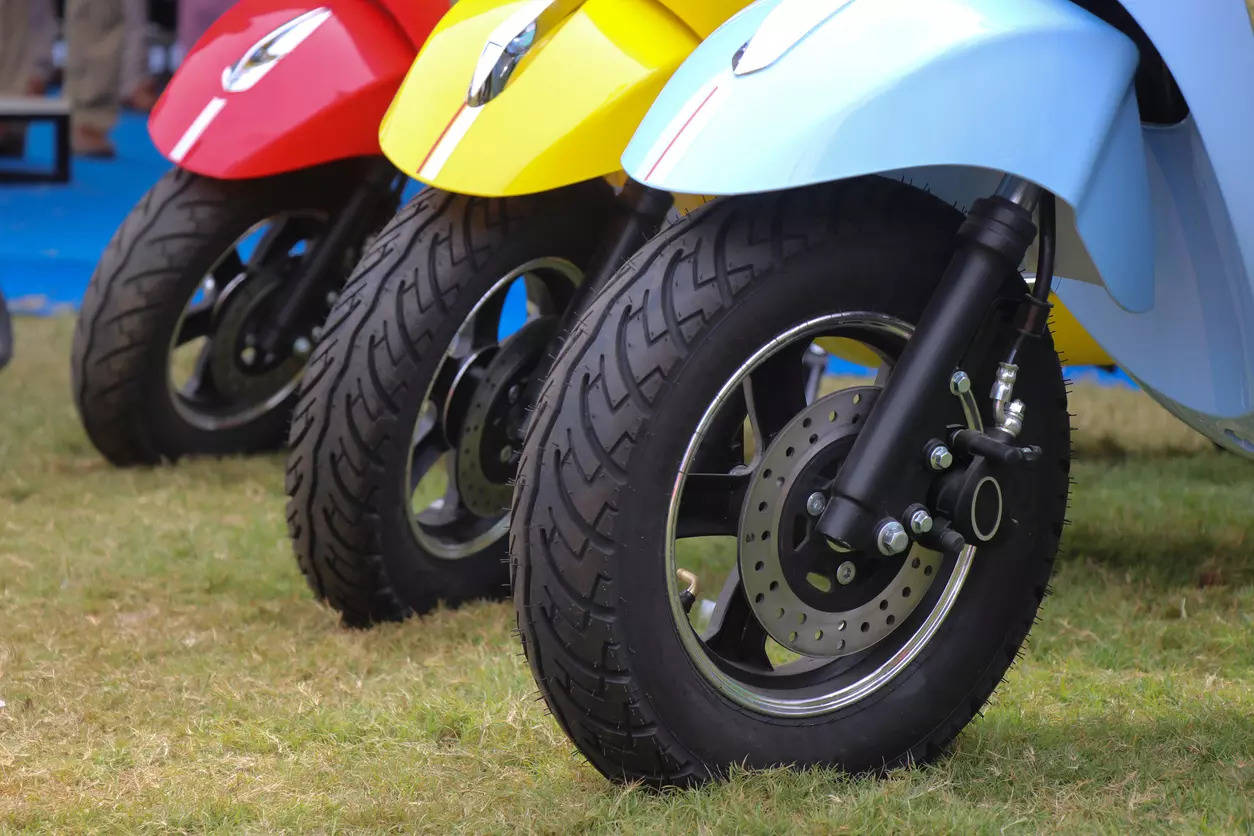
New Delhi: The Society of Indian Automobile Manufacturers (SIAM) has sought a reduction in GST levies across the two-wheeler segment from the present level of 28% to 18% and further to 12% for products offering compressed natural gas and flex fuel options.
The idea is to ensure that there is a greater sense of parity with the low GST levels of 5% extended to electric two-wheelers while also maintaining a substantial differential with ICE (internal combustion engine) models. The present 28% GST levy is seen as an impediment to the growth of the overall two-wheeler segment especially when regulatory changes have made them way too expensive.
In a letter written to the Ministry of Heavy Industries on June 11, a copy of which has been seen by ETAuto, SIAM has suggested that the Centre adopt three range slabs of GST for two-wheelers. The first involves the long standing demand of reducing the levels to 18% for all vehicles while removing the 3% cess on 350cc plus models.
SIAM has also said that the present 5% GST levy be allowed to continue on electric two-wheelers while seeking a slash to 5% from 12% on those using hydrogen. More significantly, the industry body is of the view that CNG and flex fuel two-wheelers be given a further reprieve of 12% GST once the 18% reduced structure is in place.
Bajaj CNG bike
Incidentally, Bajaj Auto is preparing to launch its CNG motorcycle in July which is believed to be a world’s first in this space. From the company’s point of view, this makes sense since it translates into lower operating costs compared to petrol. CNG is also a cleaner fuel and, even in the passenger car space, the likes of Tata Motors are giving it top priority along with electric.
Bajaj Auto has an electric offering in the form of the Chetak scooter which has been averaging sales of over 15,000 units each month. The foray into a CNG motorcycle will clearly give it a lead over competition but a bigger push will come by way of an attractive price tag which is possible only with a slash in GST levies from 28%.
“If incentivising use of clean fuel is the norm, the Centre should bridge the gap between the generous sops offered to electric and new options like CNG and flex fuel,” says an industry official. CNG has its supply challenges too and right now it is more easily available in New Delhi, Maharashtra and Gujarat compared to the rest of the country. The Centre is keen on growing the gas network nationwide and experts say the future could see a faster proliferation of CNG in the auto space.
The demand for reducing GST levies from 28% to 18% has been a long standing demand by two-wheeler manufacturers given that sales have been falling in recent years following a hike in their price tags. This has been necessitated following extra costs imposed by way of investments in technology and safety fitments following regulations.
In the process, demand has taken a nosedive especially in rural India which was ravaged during the pandemic. While lives were lost, livelihoods went for a toss too and with the added burden of inflation, the last thing families wanted was a two-wheeler.
Steep price tags
Even if some of them did, they quickly found out that both motorcycles and scooters had become way too expensive with hikes in the range of 25% and thereabouts. As people steered clear of dealerships, two-wheeler numbers began falling and even while things look slightly better today, the heady days of 2016 only seem a distant memory.
In its letter to the Ministry of Heavy Industries, SIAM has also compared different GST levels for two-wheelers worldwide where India is the highest at 28%. The next is Mexico at 16% followed by the Philippines and Indonesia at 12% and 11% respectively. Vietnam and Malaysia are tied at 10% with Brazil not too far behind at 9.25%. Thailand is the lowest at 7% which is a fourth of India’s 28%.
Additionally, the SIAM letter drives home the fact that while India remains the world’s largest two-wheeler market, penetration levels are still low at 197 vehicles per thousand people or just about 20%. Vietnam is the highest at 739/1000 followed by Indonesia with 536 and then Malaysia with 477. Thailand’s penetration levels are 371 with Brazil and Mexico languishing at 157 and 66 respectively.
It now remains to be seen if the GST council accedes to the requests made by SIAM. Any fear of a fall in revenue can be made up by higher volumes but, more importantly, it just does not make sense to have such a yawning gap between what is offered to electric two-wheelers at 5% and 28% for the rest.
“The fact remains that the two-wheeler industry is still not out of the woods and it makes perfect sense to slash GST levels across the board to 18%. Innovation should also be rewarded and a lower 12% is perfectly in order for other clean fuels like CNG and flex fuel,” says the industry official quoted earlier in the story.

















